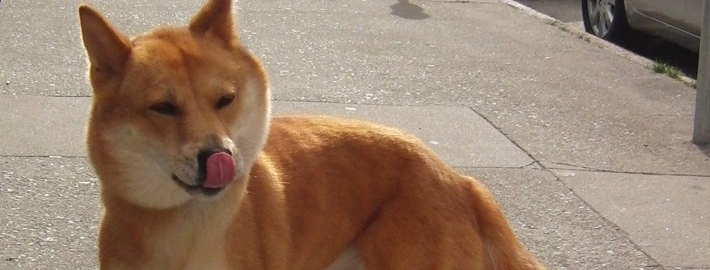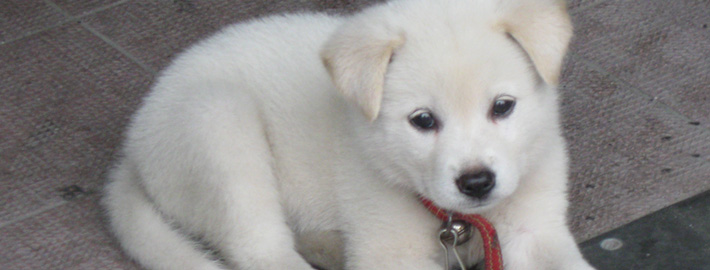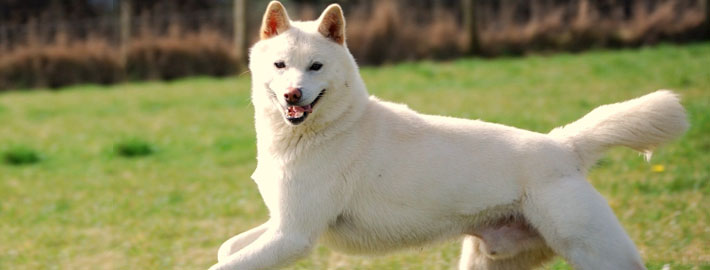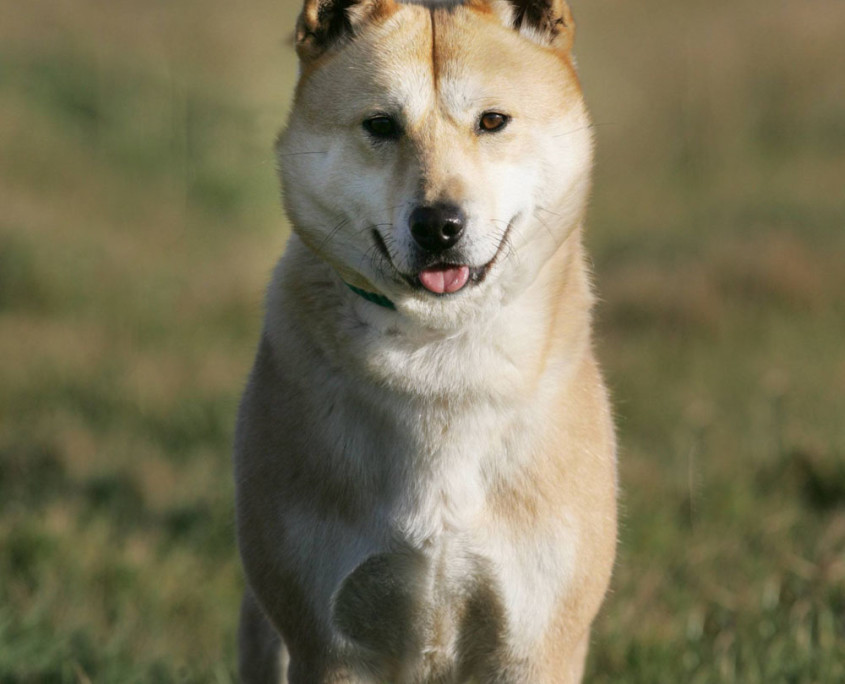What makes the Jindo Unique?
The Jindo is a medium-sized spitz-type dog that originated from the Jindo Island in Korea. The Jindos are alert, energetic and full of life, but they also tend to follow their instincts and do their own thing. Forming strong bonds with their families, Jindos crave attention and togetherness without acting needy. They can be a little standoffish with strangers, but have a playful openness with children. Korean Jindos have loads of energy.
Breed Groups
Page Contents
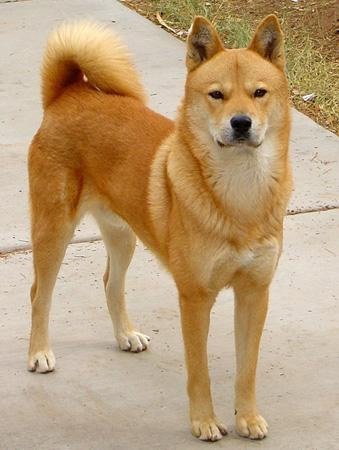
SnapShot
| Size: | Males – 48 to 65 cm (18 to 25 inches) Females – 41 to 58 cm (16 to 22 inches) |
| Weight: | Males – 16 to 23 kg (35 to 50 pounds) Females – 11 to 18 kg (25 to 40 pounds) |
| Origin: | South Korea |
| Life Span: | 12 – 15 Years |
| Colour: | Grey, Brindle, Black & Tan, Black, Red Fawn, White |
| Litter Size: | 4 to 8 puppies |
Is the Jindo Right For You?
Korean Jindo Dogs are extremely intelligent dogs that are capable of thinking for themselves and making their own decisions. Almost all Jindos possess strong wills (even the ones that seem deceptively compliant) and have independent minds. They love to roam and are quite the free spirits. They tend to be the dominant type, trying to get things their own way, and can be very protective of their loved ones and territory. Because of these traits, Jindos are not recommended for inexperienced owners.
Korean Jindo Dogs are extremely loyal and bond closely with their families. They tend to be aloof and suspicious of strangers, and are a good judge of character. They are alert courageous dogs that make excellent home watchdogs. Korean Jindo Dogs are athletic active dogs that do not enjoy a sedentary lifestyle. They require at least an hour or two of excise daily to keep them fit and happy.
In 5 Words
- Active
- Bold
- Faithful
- Loyal
- Intelligent
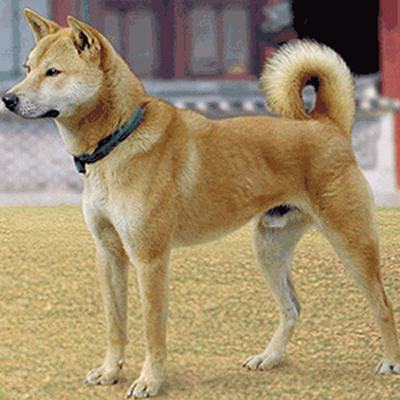
Characteristics
Learn About the Jindo
Description
General Description
Korean Jindos have compact, muscular frames covered in short, dense coats—much like the Akita and Shiba Inu. They have broad heads with pointed muzzles, dark noses, dark eyes and pointed ears. They have thick necks, well-developed chests and strong backs. Their tails curl up and over the back, and their thick coats come in a wide range of colors including white, brindle, yellow, red, tan, black, black & tan, red & white, tan & white.
Size
Unlike other dogs, there is a clear distinction between the female and male Jindo dog. The male dogs shoulder height is 48-53cm the body length is 53-58cm, and he is wild, imposing and brave. The females shoulder height is 40-50cm, the body length is 50-51cm and she is smart, swift, and graceful.
Coat
he Jindo has a double coat of medium length. The outer coat is harsh, straight, and stands somewhat away from the body, particularly in the neck and shoulder area. The undercoat is soft, very dense, and shorter than the outer coat. The outer coat is short on the head, legs and ears, longer on the neck, withers back and rump, and longest on the tail and back of the thighs.
Short History of the Jindo
The Korean Jindo Dog originally hails from the Jindo Island in South Korea. They were originally developed to be fierce hunters of wild boars, deer, badgers and rabbits; they hunted in groups and individually. They were trained to bring down their prey and then return to their owners so they could lead them to it. They were first seen in in the United States in the 1980s. The United Kennel Club gave them official recognition in 1998 and the Fédération Cynologique Internationale recognized them in 2005.
Temperament
They are developed and trained to be the working type that follows the characteristics of being hard-working, independent thinker, loyal, alert and cautious, and also very intelligent. These dogs are generally strong wills and were built as being the dominant type which when placed in the work field, brings them reliable and credible work results. In terms of their hunting skills, they are very sensitive and alert on small movements which make them excellent trackers for hunting. In this sense, they are able to track and tackle down animals and return back to their owners to have them lead to their prey.
While they stand as independent thinkers, training can be a bit hard which needs firm, consistent but loving approach of leadership. Typical Jindo dogs do not come as friendly for people whom it just met, which takes time for them to be comfortable with other people. However, they are very loyal to their first owner or trainer. Early socialization is recommended to help them associate and be familiar to people and other animals.
Caring for Your Jindo
General Health
Korean Jindo dogs are known as heavy shedders that takes place twice in a year. In this manner, a warm bath is usually recommended to help in the process of shedding while regular brushing is also needed.
Like many working dogs, they are used with a lifestyle that engages movement in their surroundings. Regular exercises can achieve through walking, running, or engaging to playful activities like Frisbee to let them be alert, active and functional.
One of the common health problems that can affect to them is Hypothyroidism. Other than that, these dogs are generally a healthy breed.
Grooming & Bathing
The Jindo has a double coat that sheds heavily twice a year. During the shedding season, extra care must be given to the coat. Warm baths can help the process along. Daily brushing is necessary to remove the undercoat. Otherwise, be prepared for rolling tumbleweeds of undercoat.
Exercise & Training
Particular focus in training should be on the Jindo’s high prey drive. Socialization from puppy hood is essential to encourage a gregarious nature with other dogs, pets, people, and children. Off the leash walking also takes a lot of training and some never make it.
Jindos need room to move. These dogs love to roam and investigate their territory (which, to them, is fairly expansive). Unless well trained on recall, it is highly recommended that Jindos be walked on lead at all times because of their prey drive. A minimum of two daily, 30-minute brisk walks are necessary and should be enough to keep a Jindo happy.

